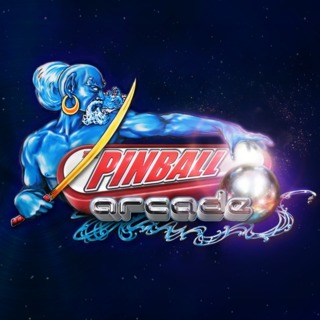Glad to see they're branching out and doing new tables ... some quibbles, but no deal-breakers here
Digital pinball vets should immediately think of Zen Studios' "Pinball FX 2" when they hear a statement like that, and frankly such a parallel makes perfect sense. Both allow you to buy extra tables through the Game Marketplace and both sport pretty smart physics engines, making the game as realistic as an actual table. In the case of "Pinball Arcade", that's especially important, since many gamers will have played these tables in real life.
Beyond those points, "Pinball FX" and "Pinball Arcade" start to differ. "FX 2" is free-to-download and you can buy as few or as many tables as you like, while "Arcade" requires you to purchase at least the debut set of tables to get started (as is standard for Xbox Live Arcade, you can of course download the software as a free trial). In the initial set, you get four tables, one each from Williams, Bally, Gottlieb and Stern. Two of them ("Tales of the Arabian Nights" and "Black Hole") will be familiar to those who have purchased earlier "Pinball Hall of Fame" standalone collections, while the other two ("Ripley's Believe It or Not" and "Theatre of Magic") are completely new conversions.
Each machine plays basically the same way; again, if you've played earlier "PHOF" titles, it'll be familiar. The right analog stick will act as your plunger, and the left/right triggers are your flippers (you can change to the bumpers in the settings). If you want to nudge the table, you move the left analog stick in the direction you want to nudge it ... to a point, because too much will tilt the machine and end the turn. Each machine has its own unique play-style, but fortunately there's a table-specific walk-through and instruction page to help you understand how to play.
Looking at the package overall, there's a lot to like, and a few things to not like. Each table carries 50 gamerscore: 10 points for getting a top-5 score on the table; 15 points for completing the table's five goals (such as triggering a special feature or reaching a certain bonus score); and 25 points for completing the "wizard" goals. As on the "PHOF" games, the wizard goals are only available after all the standard goals are completed, meaning you may have to do something over again in order for it to register. Up to four players can play in hot-seat local play, but there is no provision for playing over Xbox Live at this time, leaving the only competition between your Live friends being through the leaderboards.
The selection of camera angles isn't as expansive as its competition, but it's not too hard to find one to stick with. One camera angle sorely missing is a close-up of the plunger, since it makes skill shots based on how you launch the ball much harder (but, fortunately, not impossible). While the graphics aren't as sharp as "FX 2", the level of detail for these machines is nonetheless exceptional. The walkthroughs actually show you the targets on the boards, an improvement over "FX 2", but the background music can be downright annoying, and there's no voice-over as there is in the standalone games. Fortunately, there's an indexing feature allowing you to jump to the section/element in which you're interested.
The last gripe is kinda tough to pin down, and really is more of a missed opportunity. FarSight has said that "Pinball Arcade" emulates the software from the tables, so that the original code is controlling a virtual pinball machine instead of a real one. When you play the tables, the table software interprets that it's set in "free play" mode, and thus doesn't require you to feed it credits (virtual or otherwise). The table software has options to award extra balls instead of replays (free games), which makes sense and is what's in use here. However, when you reach the high score tables on pinball machines that have them, you still win replays, which are ultimately pointless. If it were me, I'd allow credits to be stored to unlock bonus features or even the ability to buy out onerous goals. Needless to say, the common use from the original "PHOF" games (unlocking tables for free play and "buying" plays on locked tables) isn't workable when you have to literally buy the tables you're playing.
FarSight has a very informative social media presence, keeping the game's fans posted on when new tables will launch. The first DLC is expected to include two new tables, and they've also started utilizing Kickstarter to support translation of tables that carry outside media licenses (their first attempt will be for "The Twilight Zone"). So while real-life arcades are a dying breed, the future does look bright for "The Pinball Arcade".

